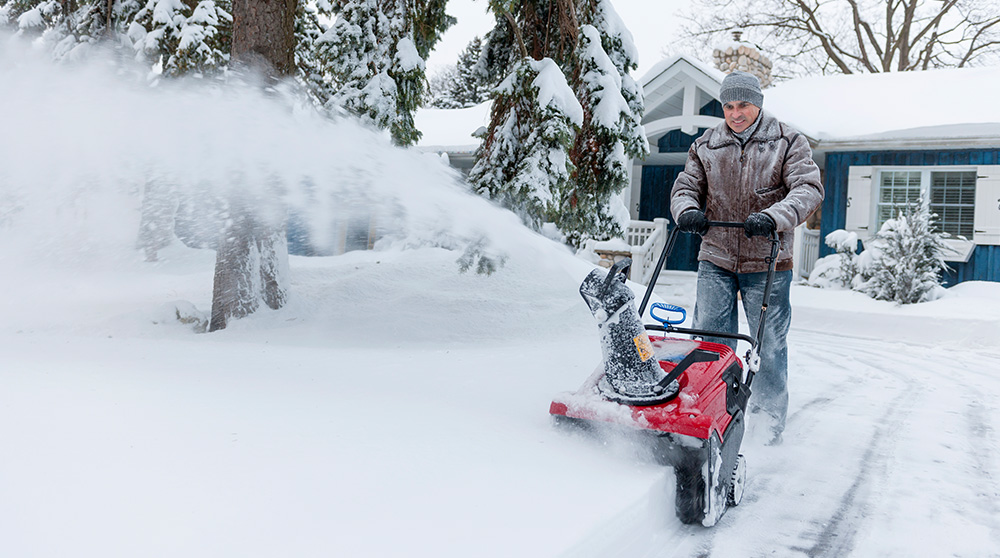13 snow blower safety tips.

The forecast shows winter snow … so what do you do? It’s time to pull out your warm clothes and get out your snow blower. To stay safe all season long, follow these snow blower safety tips.
Understand the manual. Read the manufacturer’s manual thoroughly before using your snow blower. Familiarize yourself with the machine’s features, controls, and safety precautions. Understanding the equipment’s operation will help you use it more effectively and avoid potential accidents.
Wear the right gear. Wear appropriate clothing and gear, including sturdy, non-slip footwear and snug-fitting clothing. Do not wear scarves or loose clothing that could get caught in the machine. Use hearing protection, especially if your snow blower is loud, to prevent hearing damage over time. For added protection, consider glasses or safety goggles to protect your eyes from flying debris.
Inspect your snow blower. Before each use, conduct a visual inspection of your snow blower to ensure it’s in good working order. Check for loose bolts, damaged parts, and frayed cables. Address any issues promptly to avoid potential hazards.
Clear the area. Remove debris, rocks, sticks, or other objects from the area you intend to clear with the snow blower. These objects can become dangerous projectiles if run over by a snow blower.
Choose the right conditions. Only operate your snow blower in suitable weather conditions. Avoid using it during heavy snowfall or when it’s wet and slushy. Doing so can strain the machine and pose safety risks.
Keep your hands away. Keep your hands and feet clear of the auger and discharge chute, even when the snow blower is turned off. Accidental contact with moving parts can cause severe injuries.
Turn off the engine before adjusting. Always turn off the snow blower and wait for all moving parts to come to a complete stop before making any adjustments to the machine or attempting to clear clogs. Use a tool, not your hands, to unclog the chute.
Operate the machine outdoors. Never start your snow blower in an enclosed area or garage (even if the garage door is open). Starting it outdoors is the safest option as it helps prevent a buildup of carbon monoxide. In addition, add fuel to your machine outdoors when the engine has cooled off, to reduce the risk of combustion.
Be mindful of the chute direction. Direct the snow chute away from people, cars, windows, and buildings. Be aware of your surroundings and the direction the snow is being discharged to prevent accidents and damage.
Exercise caution on uneven surfaces. Exercise extreme caution when operating a snow blower on sloped or uneven terrain. Maintain your footing and keep the snow blower’s wheels or tracks in contact with the ground.
Know your limits. Don’t overexert yourself or push the snow blower beyond its capacity. If the snow is too heavy or deep, wait until conditions are more optimal to continue. In addition, never operate heavy machinery like a snow blower if you’re feeling drowsy.
Service your machine. Regularly service your snow blower according to the manufacturer’s recommendations. This includes oil changes, fuel system checks, and blade sharpening. Well-maintained equipment operates more safely and efficiently.
Store your snow blower safely. When it’s not in use, store your snow blower in a secure and dry location, away from the reach of children and pets. Proper storage will prolong its life and prevent accidents.
With these snow blower safety tips, you’ll be ready for a safer winter season ahead. For added peace of mind, learn how to prepare for winter weather. Then, talk to a local, independent agent about comprehensive coverage.







